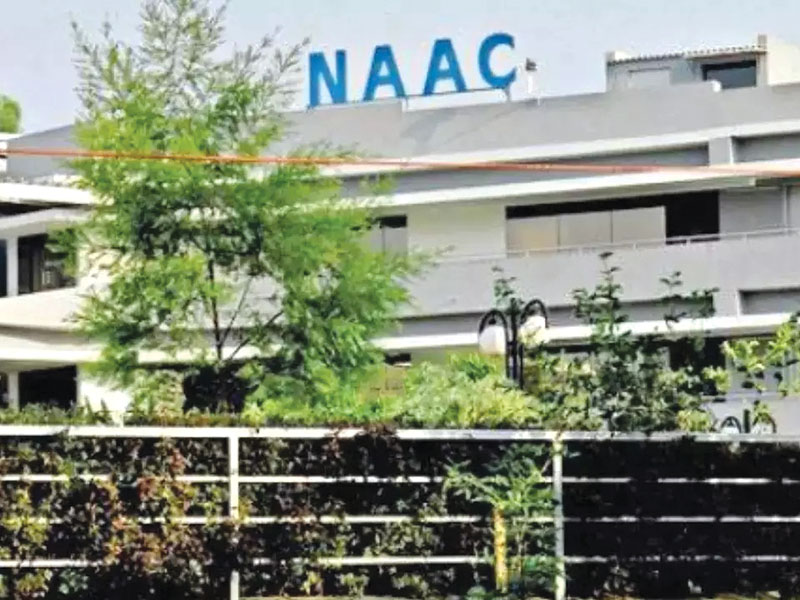Autar Nehru (Delhi)
NAAC headquarters, Bengaluru: new binary accreditation system
Most sentient higher education leaders privately lament the glacial pace at which the mandates of the National Education Policy (NEP) 2020 are being implemented in collegiate and university education. The Higher Education Commission of India (HECI) — the overarching umbrella organisation mandated to preside over the entire higher education system (excluding medical and legal education) — has not been constituted. NEP 2020 also proposed four independent verticals under HECI. Three years after NEP 2020 was unanimously approved by the BJP government at the Centre, neither has HECI been constituted nor any of the independent verticals.
However, on the issue of accreditation of higher education institutions (HEIs), there’s been some traction. On January 27, the Union education ministry issued a press note stating that the Bangalore-based National Assessment and Accreditation Council (NAAC, estb.1994), UGC’s accreditation agency for HEIs, is switching over to a binary system of grading with effect from February. This is in accordance with recommendations of the final report of the Dr. K. Radhakrishnan Committee submitted to the government in early January. The committee was constituted under the leadership of former ISRO chairman Dr. K. Radhakrishnan in November 2022 to propose reforms in NAAC’s accreditation system following a rising crescendo of complaints of irregularities, bias and corruption and “outdated static evaluation rubric”.
The Dr. Radhakrishnan Committee report finalised after incorporating public feedback and comments on its draft released in May 2023, has recommended abolition of NAAC’s elaborate cumulative grade point average (CGPA) system of accreditation for HEIs.
Under NAAC’s CGPA rating system, colleges and universities opting for evaluation were awarded A, B, C and D grades denoting Very Good, Good, Satisfactory and Unsatisfactory. Those with scores of 1.5 or less are not accredited. The new binary system has abolished this grading rubric.
According to the statement of the Union education ministry, in the first stage, the binary accreditation system will be implemented from 2024 after which no new applications will be accepted under the CGPA rating methodology.
However, the previous grading system has not been jettisoned altogether. The A-E grading system has been replaced by a new ‘Maturity-based Graded Accreditation’ system to “encourage accredited institutions to raise the bar, continuously improve, evolve in-depth or in-breadth in disciplines from Level-1 to Level-4 as institutions of National Excellence and then to Level-5 as Institutions of Global Excellence for multi-disciplinary Research and Education.”
Although NAAC’s new binary evaluation process eliminates the old A-E grading system, some monitors of higher education describe the new “maturity-based” Level 1-5 evaluation system as new wine in an old bottle. Maturity is not defined in the ministry’s January 27 press statement. However, the Radhakrishnan Committee says that under the new binary accreditation system, HEIs will be categorised (multi-disciplinary & research-intensive, teaching-intensive, vocational and skill-intensive, community engagement and service, rural & remote location) and evaluated on the criteria of “orientation and vision”, and “heritage and legacy” to be awarded Level 1-5 ranking.
In this connection, it’s also notable that although NAAC was established as a subsidiary of the apex-level University Grants Commission 30 years ago, it has not inspired much confidence among HEIs. Thus far, only 9,062 undergrad colleges (out of a total 43,796) and 418 universities (of 1,113) have opted for NAAC accreditation, which is voluntary.
According to Dr. Pankaj Mittal, secretary-general of Association of Indian Universities (AIU), binary accreditation ensures a clear and objective standard, providing stakeholders confidence in the quality and consistency of accredited institutions, simplifying decision-making processes for students, employers, and policymakers. “Switching the accreditation system from graded to binary will stop the rat race among higher education institutions for getting the highest grade. This will also encourage more universities and colleges to apply for accreditation as the fear of getting a low grade will be eliminated. Binary accreditation is a globally accepted practice and will bring the Indian accreditation system on a par with global standards,” she says.
NAAC’s record of the past 30 years in attracting HEIs to volunteer for evaluation has been dismal. The new binary accreditation system may result in a reversal of its fortunes.
